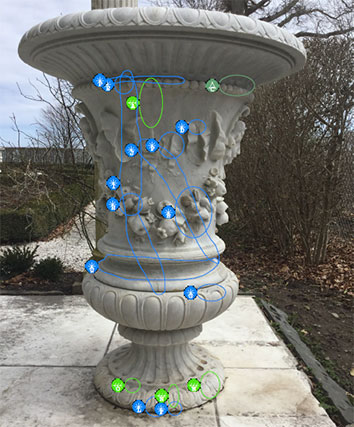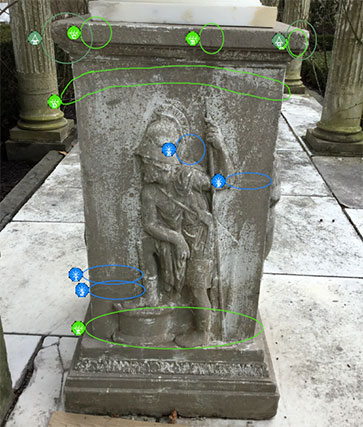Maintaining History: A Glimpse into a Capstone Project

To earn a master's in Historic Preservation at RWU, students must complete either a written thesis or a summative practical experience called the capstone project. For her capstone project, Christina Pokwatka surveyed structures and created a conditions report on a real evaluation project. Here, she reflects on some of her experience:
My capstone project focused on fifteen pieces of outdoor statuary at the Rosecliff Mansion in Newport, Rhode Island - a property owned and operated by The Preservation Society of Newport County. A large portion of my project included surveying and creating condition reports for the pieces of outdoor statuary. The report serves as one of the first steps in any preservation project. It identifies significant defects, deficiencies and recommendations for renovations. Below you'll find a few of the pieces I surveyed for my capstone project, along with some of my thoughts to give you a glimpse of what historic preservation students do and how we think.

This lion sculpture is made of marble and is located in the front yard of Rosecliff. The approach to surveying each piece is systematic. For each piece that I surveyed, I took four parent photos and labeled them view one, view two and so on. This systematic approach was a theme in my Materials and Methods of Historic Construction class. This photo is of the forth view. Annotations for this view include two cracks and an area where erosion has occurred along a vein in the marble. Other concerns on the piece include loss, carbon deposits, surface dirt, and accretion. Accretion is a term used for the build-up of a certain substance. For this piece, I recommended testing the accretion because it’s the only way to determine what the substance that is building up. That will then determine treatment.

The urn is located in Rosecliff’s Rose Garden and is also made of marble. The piece has many areas of previous repairs including recreated elements, epoxy and cementitious repairs, and crack repairs. This photo is of the forth view. Annotations for this view include several previous repairs, cracks, and an area of loss.

The plinth is made of cast stone and is located in Rosecliff’s rose garden. This photo is of the third view. Annotations for this view include cracks, previous repairs, and losses. These annotations are also on the other three views of the plinth. The Greek warrior on the plinth was donated to the Preservation Society of Newport County when the last private owner of the house donated Rosecliff. It's unknown if the piece was original to Rosecliff.
Pokwatka graduated with her master's degree in historic preservation in 2017. She was recently hired as a temporary conservation technician to work on the Marine Corps War Memorial in Arlington, Virginia by the Tradesmen Group.

